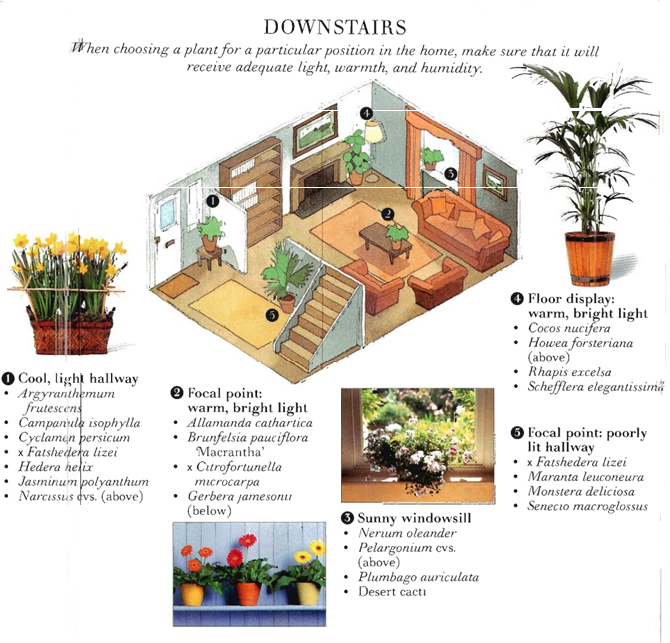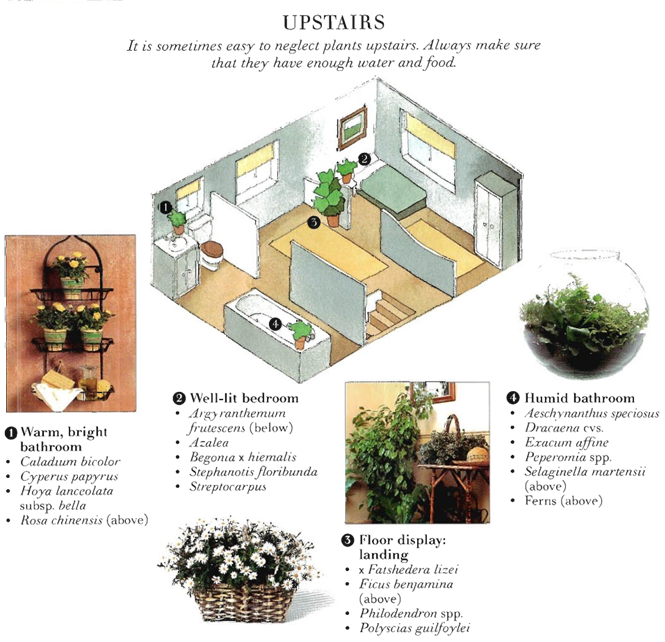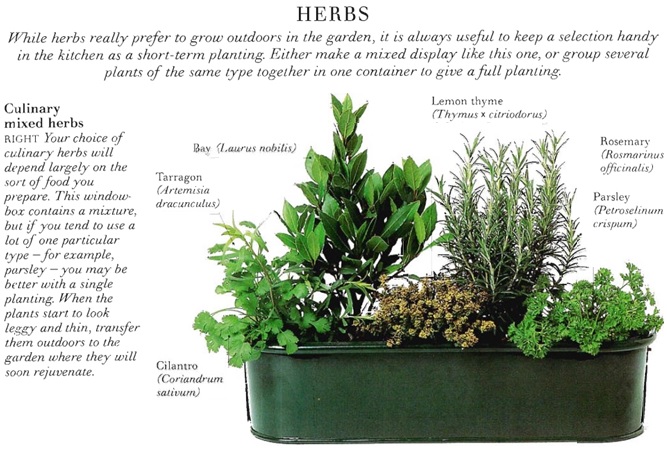Positioning Plants
Many of us purchase plants on a whim without thinking about where we’ll place them. However, selecting the right plant for the right location is crucial for successful indoor gardening.
Indoor plants are often displayed in prominent areas like the living room or hallway, where they can be admired. Unfortunately, these spots don’t always provide the best conditions for growth. For instance, the living room is typically the warmest and driest room in the house, which makes it unsuitable for many spring-flowering plants that need cool, humid conditions. On the other hand, a kitchen windowsill is often cooler and more humid, making it a better option for plants like cyclamen, azaleas, and primulas.
Temperature isn’t the only factor—light is also essential. Many people leave their plants in one location all year and wonder why they don’t thrive. In general, flowering plants need more light than foliage plants, but light levels change with the seasons. For example, a plant that thrives at the back of a north-facing room during summer, when daylight is abundant, may need to be moved closer to a window in winter when days are shorter and dimmer..

The color of your walls and the amount of curtaining also affect light levels. Light-colored walls reflect more light, making a space brighter, while dark-colored walls absorb light. Even rooms without direct sunlight can still provide adequate natural light for certain plants if the windows are large enough.
Temperature stability is another important consideration. Most indoor plants are grown in nurseries under controlled conditions, and many cannot handle sudden changes in temperature. While windowsills may provide good light, nighttime temperatures can drop below freezing in colder climates, which can damage tender plants. Similarly, in summer, plants placed too close to the glass may get their leaves scorched by direct sunlight.
When shopping for plants, pay attention to the care labels at the garden center, which typically outline the ideal growing conditions. This book also includes a directory of plants with information on light, temperature, and care requirements. Before buying a plant, make sure your
home can meet its needs. Humidity is especially important for many houseplants. If your home lacks sufficient humidity, you can increase it by grouping plants, misting them, or placing them on a tray filled with water and pebbles.
By choosing plants that suit your home’s conditions and providing them with proper care, you can cultivate a vibrant indoor garden that enhances your living space.

Direct Sunlight
This is a really bright position that receives direct sunlight for most of the day – for example, a south-facing windowsill. Shading may be needed in summer months.
A sunny room may seem like an obvious choice for displaying houseplants, but selecting the right plants is essential for their success. A south-facing bay window can feel like a desert on a hot summer day, yet the same window can become an ideal spot for winter-flowering houseplants during the darker months when natural light is scarce. Desert cacti are an excellent choice for areas that get very warm, offering a wide variety of shapes, textures, and sculptural forms.
Other taller foliage plants, like phoenix palms and yuccas, are also well-suited to sunny windows in summer, thanks to their tough, leathery leaves. However, even these plants require regular care and rotation to ensure they stay healthy and grow evenly.

Summer-flowering geraniums thrive in bright sunlight during the warmer months and are particularly well-suited to sunny windowsills. Scented-leaf geraniums are especially delightful in such spots, as the heat of the sun releases their aromatic fragrance.
In winter, plants like jasmine and bougainvillea make excellent choices for sunny windowsills. However, these beautiful plants are sensitive to dry air and require adequate humidity to flourish. They should be kept in moist—but not waterlogged—soil and watered with warm, soft water to meet their needs.



